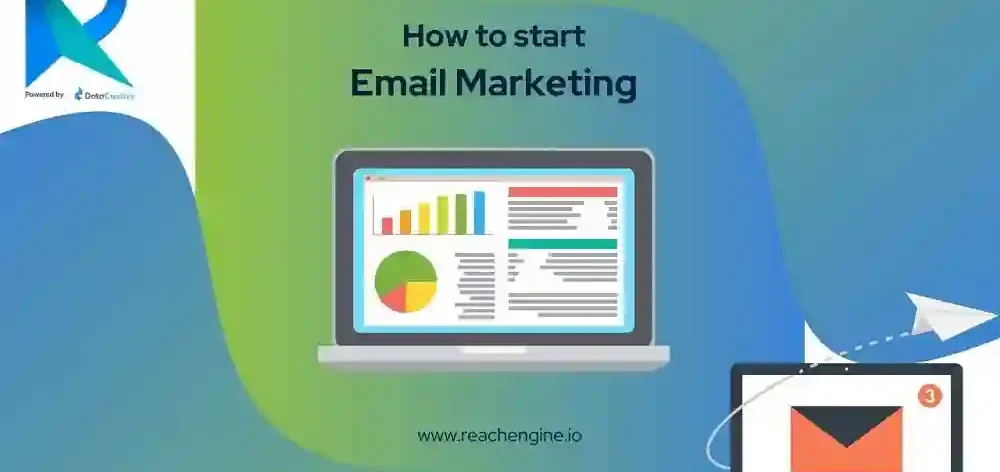Email marketing remains one of the most effective ways to engage with your audience, build relationships, and drive conversions. Despite the rise of new marketing channels, email marketing delivers an average return on investment (ROI) of $42 for every $1 spent, according to recent studies. However, running a successful email marketing campaign requires more than just sending out emails. It involves strategic planning, personalized messaging, and consistent monitoring.
In this guide, we’ll take you through the steps to create a successful email marketing campaign that captures attention, builds trust, and delivers results.
- Define Your Email Marketing Goals
Before you begin crafting your campaign, it’s essential to identify what you hope to achieve. Clear goals will guide your strategy and help you measure success.
Common Goals for Email Marketing Campaigns
- Increase Sales: Promote products or services to boost revenue.
- Build Brand Awareness: Keep your brand top-of-mind with valuable and engaging content.
- Generate Leads: Encourage sign-ups or form submissions to grow your audience.
- Drive Website Traffic: Send users to specific pages on your website.
- Retain Customers: Build loyalty through regular communication and exclusive offers.
Define your goals using the SMART framework—Specific, Measurable, Achievable, Relevant, and Time-bound. For example, “Increase website traffic by 20% within three months through email campaigns.”
- Know Your Audience
Understanding your audience is crucial to crafting emails that resonate. When you know your subscribers’ preferences, pain points, and interests, you can create messages that drive engagement and action.
Steps to Understand Your Audience
- Segment Your Email List: Divide your email list into smaller groups based on criteria such as age, location, purchasing behavior, or engagement level.
- Create Buyer Personas: Develop detailed profiles of your ideal customers, including their demographics, goals, challenges, and preferences.
- Analyze Past Data: Use data from previous campaigns to identify patterns in engagement and behavior.
- Conduct Surveys or Polls: Ask your audience directly about their preferences and interests.
Segmenting your audience ensures that your messages are relevant, personalized, and more likely to achieve your campaign goals.
- Build a Quality Email List
The foundation of a successful email marketing campaign is a strong email list. Focus on building a list of engaged subscribers who are genuinely interested in your offerings.
Ways to Build a Quality Email List
- Website Sign-Up Forms: Add subscription forms to your website with compelling calls to action.
- Offer Incentives: Use lead magnets like eBooks, discounts, or free trials to encourage sign-ups.
- Host Webinars: Collect email addresses during registration for online events or webinars.
- Social Media Promotions: Use your social media platforms to drive traffic to your email sign-up page.
- Avoid Buying Email Lists: Purchased lists often lead to low engagement and can damage your sender reputation.
A quality email list ensures higher open rates, better engagement, and fewer spam complaints.
- Craft Compelling Subject Lines
Your subject line is the first thing recipients see, and it determines whether they open your email. A compelling subject line should grab attention, spark curiosity, and promise value.
Tips for Writing Effective Subject Lines
- Keep It Short and Sweet: Aim for 50 characters or less to ensure it displays fully on mobile devices.
- Personalize It: Include the recipient’s name or location for a personal touch.
- Use Actionable Language: Start with strong verbs or phrases that prompt action.
- Create Urgency or Exclusivity: Use phrases like “Limited Time Offer” or “Exclusive Invite.”
- Avoid Spam Triggers: Avoid words like “Free,” “Cash,” or excessive punctuation marks.
Examples:
- “Don’t Miss Out: 50% Off Ends Tonight!”
- “John, Here’s Your Exclusive Discount Code”
- “Your Weekly Dose of Marketing Tips”
- Create Engaging Email Content
Once your subject line captures attention, the body of your email needs to keep it. Focus on providing value, maintaining relevance, and encouraging action.
Components of Engaging Email Content
- Personalization: Address the recipient by name and tailor the message to their preferences.
- Clear and Concise Messaging: Get to the point quickly and avoid overwhelming the reader with too much text.
- A Strong Hook: Start with an engaging opening line that piques curiosity.
- Visuals: Use images, videos, and graphics to break up text and make your email visually appealing.
- Call-to-Action (CTA): Include a clear and compelling CTA that tells the reader exactly what to do next (e.g., “Shop Now,” “Learn More,” or “Download Free Guide”).
Example Email Structure
- Subject Line: Grab the reader’s attention.
- Header: Summarize the main message or offer.
- Body: Provide details in a concise and engaging manner.
- CTA: Use a button or link to drive action.
- Optimize for Mobile Devices
With over 50% of emails opened on mobile devices, optimizing your emails for mobile is non-negotiable.
Mobile Optimization Tips
- Use a responsive design that adjusts to different screen sizes.
- Keep subject lines short for better mobile visibility.
- Use large fonts (at least 14pt) for readability.
- Ensure CTAs are easy to tap and visually distinct.
- Limit image file sizes to reduce loading times.
Mobile-friendly emails improve user experience and lead to higher engagement rates.
- Schedule and Automate Your Campaign
Timing and automation are critical components of email marketing success. Sending emails at the right time and automating repetitive tasks can significantly boost efficiency.
When to Send Emails
- Test different days and times to find what works best for your audience.
- Generally, midweek mornings (Tuesday, Wednesday, Thursday) tend to yield higher open rates.
Use Automation
Leverage email marketing software to automate tasks such as:
- Welcome emails for new subscribers.
- Abandoned cart reminders.
- Birthday or anniversary emails.
- Post-purchase follow-ups.
Automation ensures timely and consistent communication without overwhelming your team.
- Monitor and Analyze Performance
Tracking the performance of your email campaigns is essential to understand what’s working and where you can improve.
Key Metrics to Monitor
- Open Rate: The percentage of recipients who opened your email.
- Click-Through Rate (CTR): The percentage of recipients who clicked on links within your email.
- Conversion Rate: The percentage of recipients who completed a desired action, such as making a purchase.
- Bounce Rate: The percentage of emails that couldn’t be delivered.
- Unsubscribe Rate: The percentage of recipients who opted out of your email list.
Use these insights to adjust your strategy and optimize future campaigns.
- Ensure Compliance with Email Laws
To maintain trust and avoid penalties, it’s crucial to comply with email marketing regulations.
Best Practices for Compliance
- Obtain Consent: Only email individuals who have opted in to receive communications from you.
- Provide an Easy Unsubscribe Option: Include a visible and functional unsubscribe link in every email.
- Use Accurate Sender Information: Ensure your “From” name and email address are clear and recognizable.
- Follow GDPR or CAN-SPAM Laws: Depending on your audience, adhere to regional regulations regarding data privacy.
- A/B Test Your Campaigns
A/B testing involves sending two variations of an email to segments of your audience to determine which performs better.
What to Test
- Subject lines
- Email copy
- Visual elements
- CTAs
- Send times
Use the results of your A/B tests to refine your strategy and optimize for better engagement.
Conclusion
Creating a successful email marketing campaign is a dynamic process that involves understanding your audience, crafting compelling content, and leveraging the right tools and strategies. By defining clear goals, personalizing messages, and continuously analyzing performance, you can build stronger connections with your audience and achieve impressive results.




